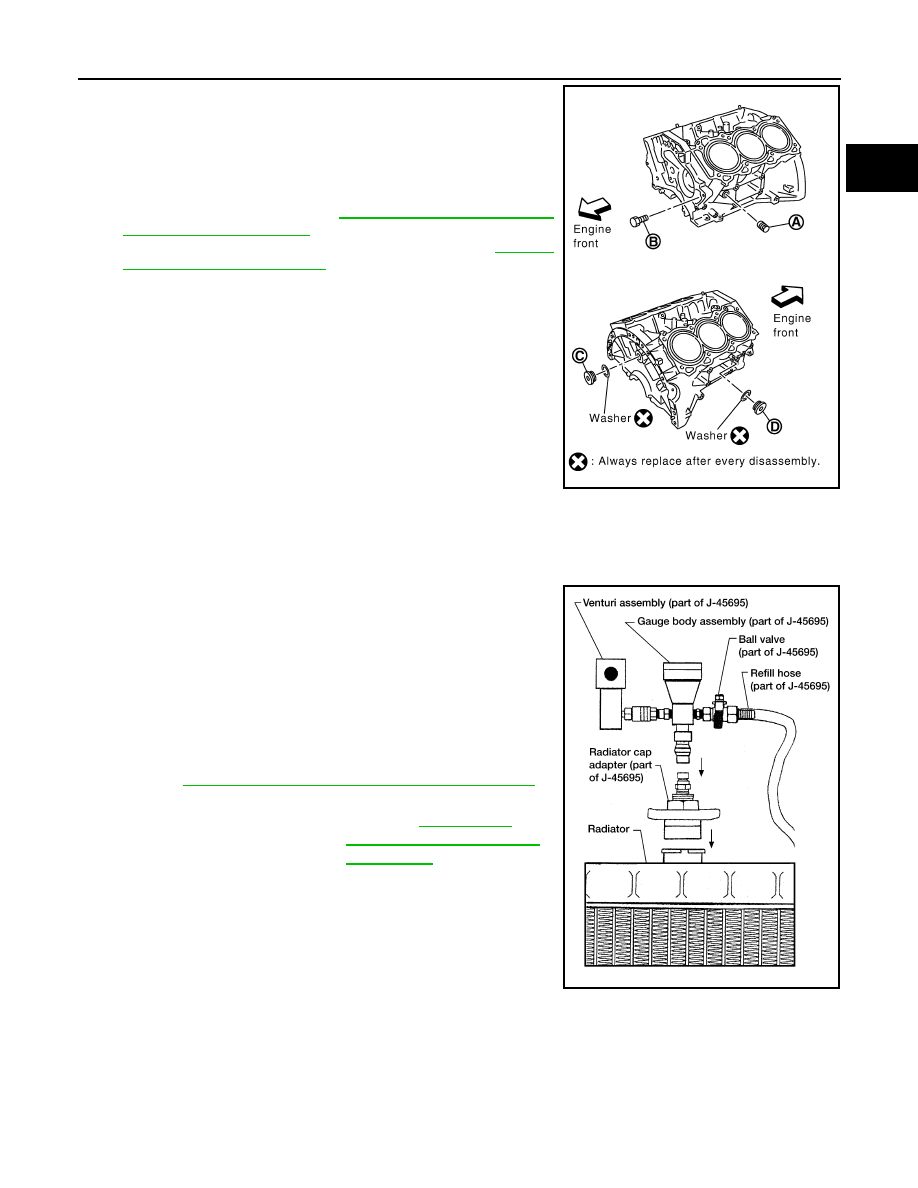Nissan Frontier D40. Manual - part 195

ENGINE COOLANT
CO-41
< ON-VEHICLE MAINTENANCE >
[VQ40DE]
C
D
E
F
G
H
I
J
K
L
M
A
CO
N
P
O
1.
Close the radiator drain plug. Install the reservoir tank, cylinder
block drain plugs (A), (B), (C), (D) and block heater if equipped,
if removed for a total system drain or for engine removal or
repair.
• The radiator must be completely empty of coolant and water.
• Apply sealant to the threads of the cylinder block drain plugs
(A), (B), (C), (D). Use Genuine High Performance Thread
Sealant or equivalent. Refer to
.
• Tighten each plug to the specified torque. Refer to
2.
Set the vehicle heater controls to the full HOT and heater ON position. Turn the vehicle ignition ON with
the engine OFF as necessary to activate the heater mode.
3.
Remove the vented reservoir cap and replace it with a non-vented reservoir cap before filling the cooling
system.
4.
Install the Tool by installing the radiator cap adapter onto the
radiator neck opening. Then attach the gauge body assembly
with the refill tube and the venturi assembly to the radiator cap
adapter.
5.
Insert the refill hose into the coolant mixture container that is
placed at floor level. Make sure the ball valve is in the closed
position.
• Use recommended coolant or equivalent.
Refer to
MA-16, "For North America: Fluids and Lubricants"
6.
Install an air hose to the venturi assembly, the air pressure must
be within specification.
CAUTION:
The compressed air supply must be equipped with an air dryer.
7.
The vacuum gauge will begin to rise and there will be an audible hissing noise. During this process open
the ball valve on the refill hose slightly. Coolant will be visible rising in the refill hose. Once the refill hose is
full of coolant, close the ball valve. This will purge any air trapped in the refill hose.
WLIA0020E
Tool number
: KV991J0070 (J-45695)
Cooling system capacity
(with reservoir)
: Refer to
North America: Fluids and
Lubricants"
.
Compressed air
supply pressure
: 549 - 824 kPa (5.6 - 8.4 kg/cm
2
,
80 - 119 psi)
LLIA0058E